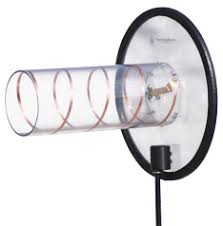For LightSquared, “And now the end is near,…”
To quote a famous Frank Sinatra song, “the end is near.” At least it appears that way for LightSquared. On February 14, the NTIA released a letter to the FCC stating, “We conclude at this time that there are no mitigation strategies that both solve the interference issues and provide LightSquared with an adequate commercial network deployment.” Responding to that letter, today the FCC released a spoken statement that said, “The International Bureau of the Commission is proposing to (1) vacate the Conditional Waiver Order, and (2) suspend indefinitely LightSquared’s Ancillary Terrestrial Component authority to an extent consistent with the NTIA letter.” In short, LightSquared’s access to the spectrum has been denied. It’s likely that from this point forward, the lawyers will be the primary recipient of funds.
This is a sad result, although predictable. As LightSquared heads for bankruptcy or buyout (the fourth in this Companies history, if I count correctly), it’s appropriate to reflect. While nearing the end, the aftermath of LightSquared’s attempts will be long. However, I am hopeful that some positive change might result. While true that politics became the dominate force in this debate, I consider that actually a plus since politics often arises when so many are affected by the outcome. As I have said many times, the outcome of this could be predicted by the number of voters that had GPS units compared to the voters with LightSquared handsets. But in a larger context, this whole issue has raised the awareness of many to our reliance on GPS, its vulnerability; the intense battle for spectrum to support our insatiable appetite for wireless devices; and the complexities of dealing with spectrum regulation (there were at least five agencies involved in this debate excluding Congress, Dept. of Transportation, NTIA, FCC, DoD, NPEF, and the FAA to name a few). It is my hope that the result of this will create an awareness that GPS has become a critical public service worthy of strengthened policy and legislation protecting its civilian use. It is also my hope, that the FCC and DoD can better their spectrum management to address situations where manufacturers that ignore the technical parameters in adjacent spectrum cannot seek “protection in numbers”, and the FCC begins to monitor the circumstances that foster spectrum squatting.
I may in a minority, but I actually think the FCC got more right with this than wrong. Nothing about the January 2011 waiver required a change in the technical parameters for LightSquared, so in my mind, it did not require a Notice for Proposed Rule Making (NPRM) by the FCC. However, there are those such as Scott Pace, Director of Space Policy at George Washington University, that disagree believing that such a widespread deployment of terrestrial capacity was a change in the spectrum use. It is an argument, and one that LightSquared bet on – at least one way. However, the GPS community bet the opposite way. Any Company deploying a Ancillary Terrestrial Component in this frequency range will create the issues raised by the LightSquared testing. It’s just a matter of how widespread.
My last hope for a positive outcome of this drama, is the highlighting of the support for space technology and space communications. LightSquared may have been a thinly veiled attempt at auction free wireless spectrum (hardly free by Falcon’s accounting at the moment), but it was a satellite system too; and in that it was an attempt to create a economically viable hybrid network of satellite and terrestrial capacity. That in itself is a noble goal in that it would bring a national service to rural communities and provide a competitive alternative to the wireless oligarchy emerging in the US. The good news on that front is that while LightSquared may be at its end, EchoStar is coming, ViaSat has launched, and either of them have a better chance at success. To quote Mr. Churchill, “This is not the beginning of the end, but it is the end of the beginning!”


